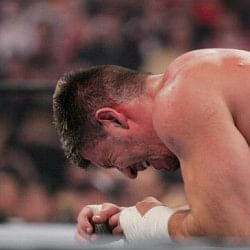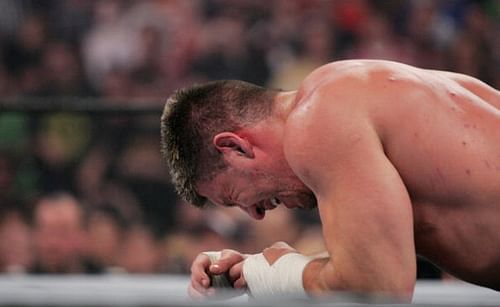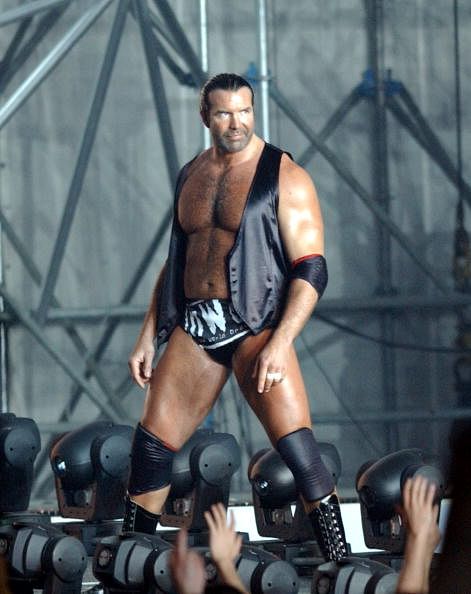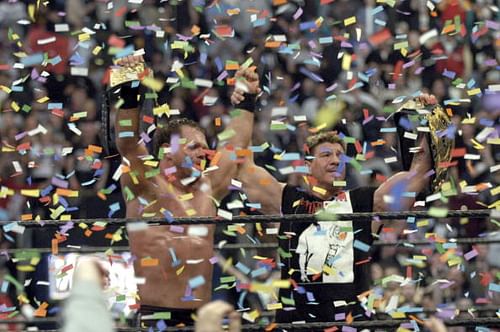
The WWE, and its Ring of Death

“The only place I get hurt is out there. The world don’t give a s**t about me.”
- Scott Hall
Larger than life, as they are under the bright lights that showcase them as demigods, the lives of wrestlers, much on the contrary, are an uphill struggle. It’s near impossible for them to replicate the high that they receive while in the ring, and struggling to maintain peak physical conditions after taking a regular battering, albeit an enacted one, many have fallen prey to the lures of illegal substances, which have usually either ended careers, or indeed their lives.
In a harrowing statistic, it is been shown that over the last 15 years, around 60 WWE wrestlers, active or retired, have died under the age of 50. Compare that to a ‘real’ physical sport like boxing, where the risks of injury and mental damage are just as high, and the numbers just don’t add up.
Are these numbers being accounted for? In this money-churning machine that is the WWE, is there anyone to take the blame for these casualties?
Work, and its addictions
The 90s saw an overhaul of the definition for a WWE wrestler. In the past, it was not uncommon to see portly men doing battle in the ring, with no pre-requisite to boast of a Herculean build. Later however, in an attempt to make the company’s final product more attractive, WWE chairman Vince McMahon went on a drive to sign wrestlers with chiselled frames and intimidating demeanour.
One of those new faces was Scott Hall.

Modelled on Al Pacino’s character Tony Montana from Scarface, Hall, named ‘Razor Ramon’ in the WWF, as it was called back then, shared not only the ‘bad guy’ attitude and the catchphrases of the famous movie character, but also his drug-abusing habits.
Living off illegal substances and the high that his thousands of fans gave him while in the ring, Hall found himself easily disillusioned when away from the starry lights and the fame. In the words of long-term friend Kevin Nash: “The only time he was in control of himself was in the ring.”
With passing time and deteriorating health, the WWE deemed him not good enough to perform for them, and the lights slowly started blacking out for the one-time superstar, both personally and professionally. A man who used to live off the adrenaline of the fans, now didn’t know how to cope with life in its more sombre form.
“I don’t want to die. But I’m not afraid to. Because what’s left, man? What do you do when they quit chanting your name?”
- Scott Hall
After regular and desperate trips to the hospital to save his life, the culmination of his professional decline came at an independent wrestling event that Hall headlined two days after having a seizure. Clearly not in a position to walk, leave alone wrestle, his state was representative of the slow deterioration of both his health and his stature that the profuse usage of drugs had led to.
If one thought that cases such as Hall’s were a result of the rock-and-roll lifestyle of yesteryear, then they are the most mistaken. The Hardy Boys, pioneers of the emergence of WWE’s tag-team scene, are a few of many who have been struggling with addiction-related complications for years now, with Jeff Hardy’s instability spilling onto his work in the ring during TNA’s Victory Road a little more than a year back. Hardy came out to wrestle in the show’s main event, clearly not in shape and under the influence, thus causing an abbreviated contest, fan disgruntlement, and a massive apology from the organisers.
His brother Matt was not far behind, posting a video on YouTube only a few months later that suggested that he was about to commit suicide, after having been fired from TNA and slapped with a DUI charge in the days leading up to the incident. Startled fans called the police to intervene, and it was only later that Matt apologised for his aberration, one of many such inebriated acts by the 38-year old.
Success, and the eventual breakdown
Eddie Guerrero and Chris Benoit were allies not only in WWE’s fabricated storyline, but also in real life, where the two shared a strong bond while wrestling across Europe, Asia and both the Americas. Neither of them was the biggest in size when compared to the Goliaths they sometimes faced inside the ring. They were required to put their bodies on the line on a daily basis, as well as build strapping physiques that would provide an illusion of a fair contest to the viewers. Also required to perform manoeuvres involving greater risks, the possibility of pain and injury grew manifold, forcing them to find solace in alcohol and drugs in order to wear off the tiredness from the previous night and prepare for the next task at hand.

The results of their perseverance finally seemed to have been realised on March 14, 2004, when the two celebrated their rise to the pinnacle of the WWE industry together in front of 20,000 fans at the Madison Square Garden in the year’s biggest event, WrestleMania. Guerrero, having beaten Kurt Angle, retained his WWE Championship, while Benoit, an epitome of grit and perseverance, forced multiple-time champion Triple H to tap out to win the main event of the night, along with it the WWE Heavyweight Championship.
Yet, as Guerrero was to find out exactly 20 months later, the constant supply of steroids and growth hormone drugs was going to catch up with them, as ‘Latino Heat’ died of a cardiac failure, resulting from the narrowing of his blood vessels over time. Many close friends of his later admitted that Guerrero’s dependencies had slowly gotten the better of him, and with time he was becoming more of a basket case.
A mere 19 months later, Benoit was to breathe his last as well, as the Canadian, crippled with brain damage that rendered his brain comparable to “that of an 85-year-old Alzheimer’s patient” and an overdose of drugs as tests later proved, first killed his wife and then his seven-year old son before hanging himself.
***
Shaken by the deaths of their two stalwarts and questioned by various sections of the media and the Government, the WWE kickstarted a ‘Talent Wellness Program’, which promised to stall the burgeoning use of performance-enhancement drugs throughout the industry. WWE chairman Vince McMahon insists that they have taken measures to help their beleaguered stars, paying for rehabilitation and medical expenses for many of the industry’s performers, whom he considers family. However, the fact that several WWE wrestlers were linked with steroid purchases after a pharmacy bust soon afterwards suggests that the program is more to appease others than really help its dependent athletes.

A few wrestlers have been suspended since for reported drug abuse, but industry experts suggest that it would be foolhardy for McMahon to put to risk the careers of his top earners, and along with it the company’s economic well-being, even if it meant compromising on their evident steroid usage. A clear example of the above would be the ease at which Randy Orton got away after being caught in a drug bust, with the WWE handing the top earner a slap on the wrist while suspending others.
It is probably the gruelling schedules that WWE wrestlers work under, that push them closer to the edge, and force them to eventually resort to drugs in order to regain fitness and stem pain. Many wrestlers work over 200 days a year including the in-house shows that do not air on television, and the exertions and injuries sustained from those battles, added to a lifestyle that constantly requires them to be on the move and the lack of an off-season, hampers their health.
Today, wrestlers like CM Punk claim to be ‘straight-edged’ and not use any performance-enhancing medication. Yet, there are many others who openly admit to using drugs, and insist that there is no other alternative in their quest to sustain themselves in a schedule as strenuous as the WWE’s without the help of banned substances. After all, if they can’t keep up, then there are hundreds of others who are waiting in the wings, ready to snap up that empty spot.
As much as we convince ourselves that the WWE is fake and that its employees are merely actors, it is those fictitious characters that the wrestlers learn to portray better than their real-life identities, over time. Their lives and their dependencies are testament to the fact that while the storylines may be scripted, the pain and the repercussions that go into living such larger-than-life characters is very much real.